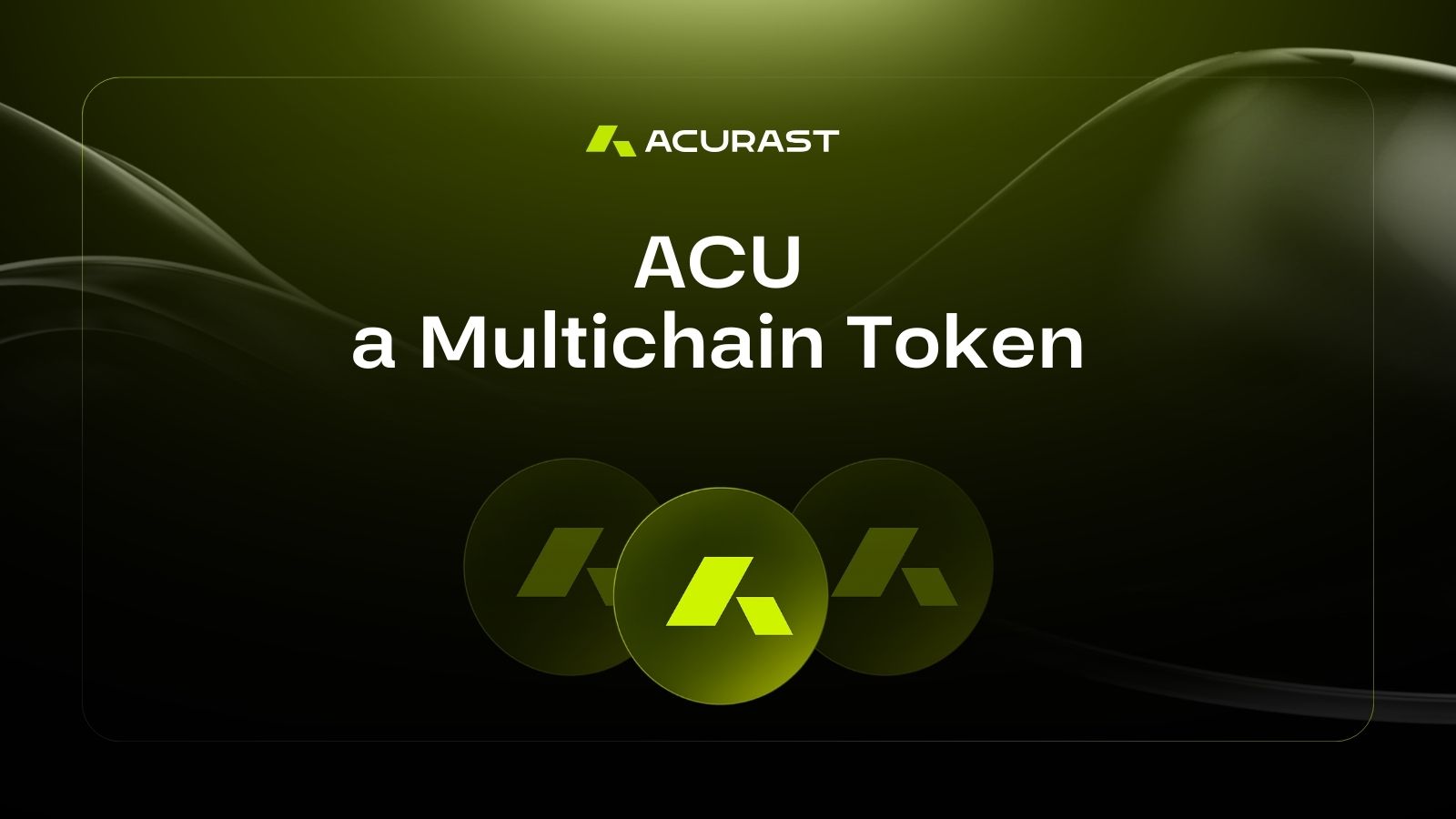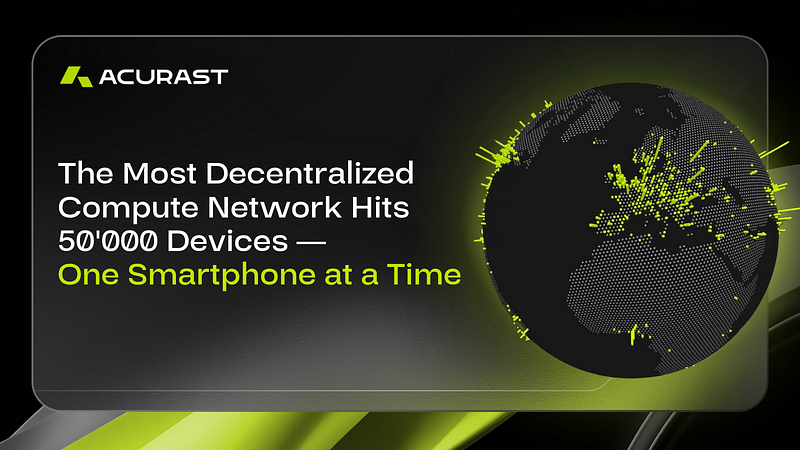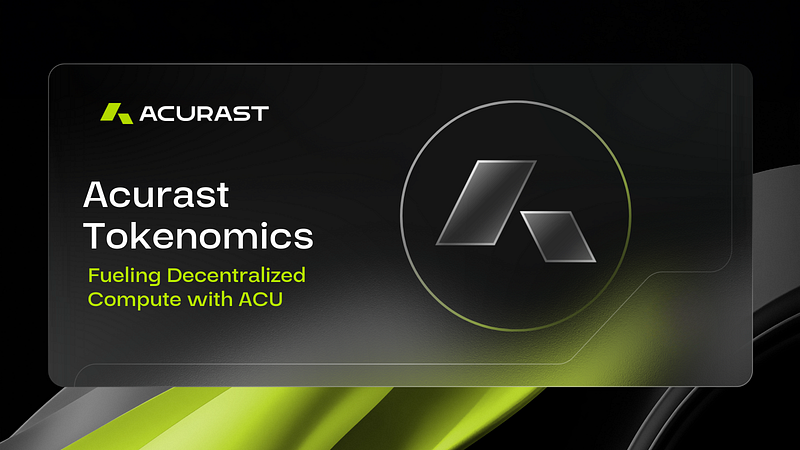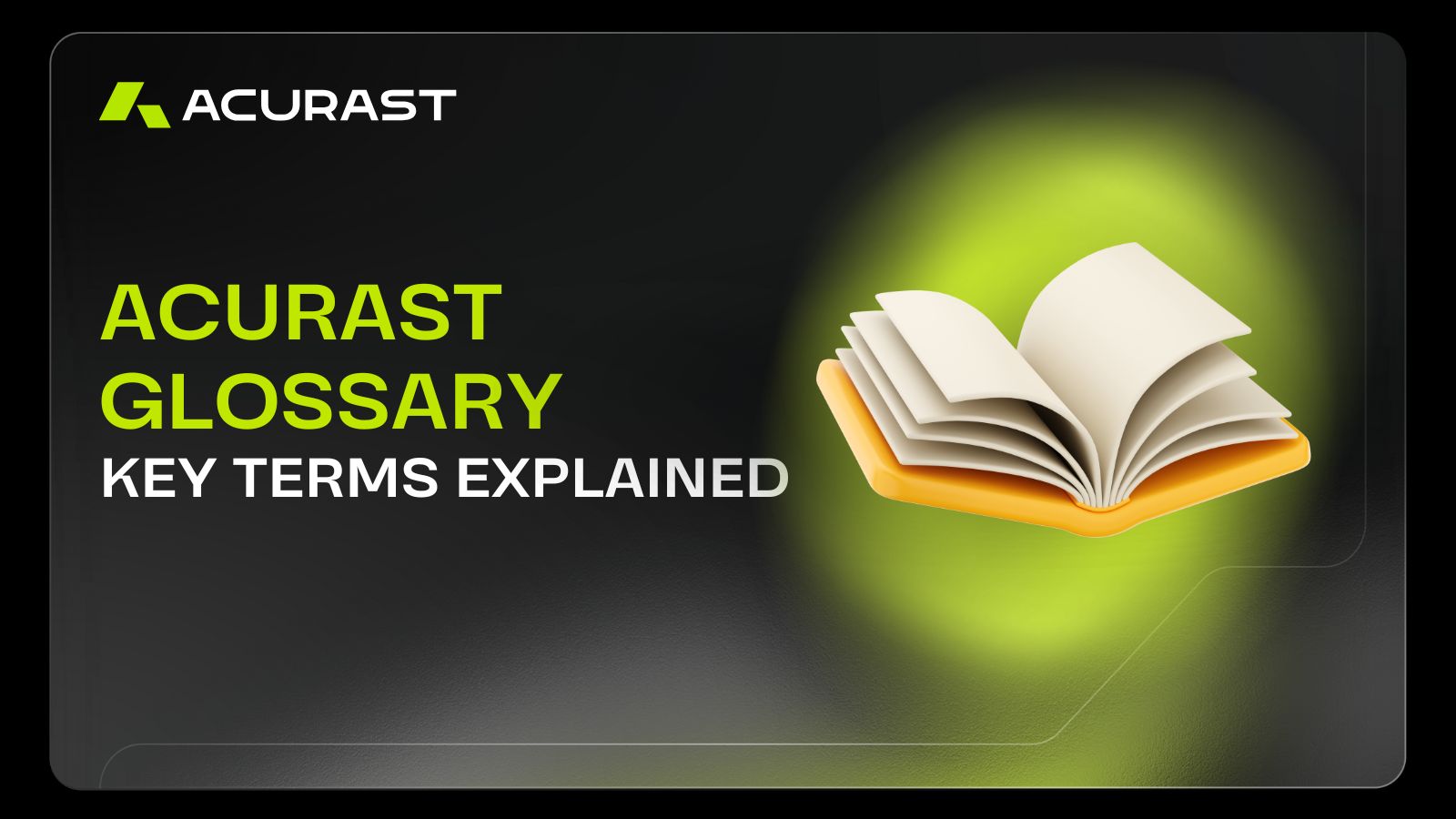
A Beginner’s Guide to Acurast: Key Terms Explained
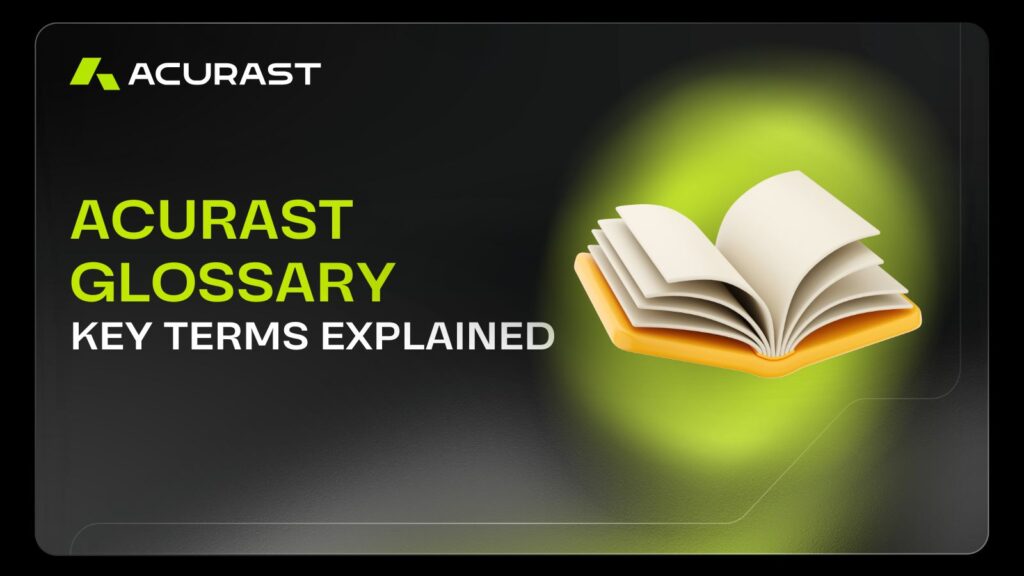
Whether you’re new to decentralization and blockchain, or already part of the Acurast community, it’s important to learn the essential terms and ideas it’s built on. This glossary was created to make Acurast’s core concepts easy to grasp, explaining the main terms in a simple and intuitive way that anyone can follow.
It will start with the fundamentals: what compute is, how it’s delivered, and why decentralization matters and then gradually build toward more specific terms like staking, mainnet, and ACU.
Core Concepts
Compute — “the power that makes apps work”
Compute refers to processing power: the ability of a device to run tasks, calculations, or applications. It’s what powers everything from running apps to processing data or training AI models. All modern applications rely on compute. For example, when an AI model like ChatGPT generates a response, it needs compute power to process and generate this.
In Acurast:
Compute comes from everyday smartphones instead of big data centers from providers like Amazon (AWS) or Google Cloud. Acurast uses the processing power of your phone when you’re not using it, turning otherwise wasted energy into rewards for you, and providing reliable compute for developers to power their applications.
Why it matters:
Acurast makes compute more accessible by turning everyone’s phone into a small ‘data centre’, and rewarding users for their contribution. This creates a large, decentralized (see term below) network of phones that reduces reliance on centralized cloud providers, removes single points of failure, and makes access to compute more open, scalable, and community-driven.
Decentralization — “many owners instead of one”
Now that we understand what is being provided (compute), decentralization explains how it is governed. Decentralization means the network is run by many participants instead of a single central company or authority.
In Acurast:
No single data center or corporation controls the network. Instead, compute is provided by thousands of independent phone owners. For example, in a traditional setup, companies like Amazon AWS or Google Cloud own all the processing power and can decide who can use it, and what happens with the data. But in Acurast, anyone can contribute and no one can lock others out. If Amazon turns off a server, a service goes offline. Acurast can not be “switched off” because the infrastructure is distributed among thousands of independent providers.
Why it matters:
This removes gatekeepers, lowers barriers to entry, and makes the network more resilient, fair, and community-owned.
DePIN (Decentralized Physical Infrastructure Network) — “infrastructure built by people, not corporations”
Once you understand decentralization, DePIN describes what that looks like in practice.
DePIN is a network where physical hardware (phones, miners, servers, hotspots, etc.) is operated by individuals to provide real-world services in a decentralized way.
In Acurast:
The service being provided is compute. Instead of renting processing power from big tech cloud providers, the workload is handled by many personal smartphones working together to create one large network.
Why it matters:
This allows people to contribute value using phones they already own, shifting infrastructure away from large companies toward the community, who, in turn, get rewarded. The network grows naturally as more people join.
These three concepts — Compute → Decentralization → DePIN — form the foundation of how Acurast works.
Once you understand them, it becomes much easier to follow the next steps: how devices participate, how reliability is measured, and how the token model works.
Acurast Specific
Processor (Phone)
A processor is any phone providing compute to the Acurst network. Many people connect multiple phones, meaning they contribute multiple processors.
In Acurast:
When you connect your phone to the network (more information here), it doesn’t just run tasks normally — it runs them inside a Trusted Execution Environment (TEE). This is the built-in security component of the phone’s hardware that guarantees the work is executed securely and can not be manipulated, even by the phone owner. This means that Acurast will never touch your personal data.
Why it matters:
Acurast enables everyone with a smartphone to participate, and get rewards from the compute they aren’t using. Users become infrastructure providers without specialized hardware, and they can do it in a secure way.
Benchmark
A benchmark is a score that shows how powerful your device is compared to others
In Acurast:
Once you have onboarded your phone to the Acurast network, you will be able to see the benchmark score in your app. Phones with stronger processors earn a higher benchmark score and are receiving bigger rewards. The score is based on multiple factors like CPU power, RAM capacity and Storage availability, and the scores can fluctuate over time.
Check more here: https://acurast.com/blog/announcements/acurast-will-be-sunsetting-the-bootstrap-campaign-and-move-towards-a-fairer-system-using-benchmarked-rewards/
Why it matters:
It makes the reward system fairer, since faster and newer devices can handle larger tasks.
Heartbeat
Definition:
A heartbeat is a small “check-in” signal your device sends to the network to show it is still online and working.
In Acurast:
Phones connected to the network send a heartbeat roughly every 30 minutes. If a phone stops sending heartbeats, it means it went offline or stopped working. This can affect how many developer tasks you receive, and the rewards from them.
Why it matters:
It ensures that only active and reliable phones remain part of the network and get rewarded.
How the Economic Model Works
Now that the Acurast specific terms are explained, let’s look at how the network rewards trustworthy compute and how Acurast’s token model aligns incentives.
ACU vs cACU
ACU (and cACU before mainnet) is the token that powers the Acurast network.
The token is what lets people take part in the Acurast network: to contribute compute, help secure the system, and get rewarded. Without a token, there would be:
- no way to reward people providing compute with their phones,
- no way to protect the network from bad actors or spam,
- and no way for the community to have ownership or participation.
Right now, the network runs on a testnet, a practice version of the blockchain. To start rewarding participants, testnet tokens are used, in this case, cACU. Once the mainnet launches, cACU will convert into ACU, the final live token.
What the token is used for:
- showing commitment (staking)
- supporting devices
- receiving rewards
- paying for compute
- (later: voting and governance)
Why it matters:
The token is what turns participation into ownership. Instead of cloud companies owning the infrastructure, the people who run the network, through their phones or tokens, are the ones who benefit from it.
cACU is like an early access pass.
When Acurast officially launches, that pass upgrades to the real pass: ACU.
Staking
Definition:
Staking means locking your tokens for a period of time to support the network and get additional rewards in return.
In Acurast:
People who provide compute with their phones can choose to stake to receive extra rewards, showing their commitment to providing a certain amount of compute for a set period of time. If the device then goes offline regularly or fails to complete its assigned work, part of the stake can be lost.
Read more here: https://acurast.com/blog/announcements/staked-compute-how-your-stake-secures-and-strengthens-the-acurast-network/
Why it matters:
It helps ensure that reliable devices power the network. Good performers earn more rewards, while bad or unreliable devices are discouraged. It’s similar to a security deposit: if you follow the rules, you’re rewarded; if you break them, you lose part of your deposit. Overall, this system makes the network stronger and more trustworthy.
Mainnet
Mainnet is the final, fully live version of a blockchain where tokens have real value. Testnet is for testing with no risk. A canary network is an in-between stage used to test the system with real users before launching the mainnet.
In Acurast:
Right now Acurast is running on its canary network using cACU. Once everything is ready, Acurast will launch its mainnet, where ACU will be the real, fully live token.
Why it matters:
The mainnet marks the moment Acurast becomes fully operational. It’s where the network runs independently, tokens gain real value, and the ecosystem transitions from testing to a live, production-ready environment.
TGE (Token Generation Event)
TGE is the moment when the project’s official tokens are generated, they become live and you can trade them on the mainnet.
In Acurast:
TGE is when ACU officially launches (replacing cACU), and users can finally use the real token for staking, rewards, governance, and further participation in the network.
Why it matters:
The TGE marks the transition from testing to a fully live economy. It’s when the network, token, and community all come together to power Acurast’s decentralized ecosystem.
Read more about TGE here: https://acurast.com/blog/announcements/the-acurast-association-announces-launch-date-for-token-generation-event-tge-and-looks-ahead-to-next-steps/








